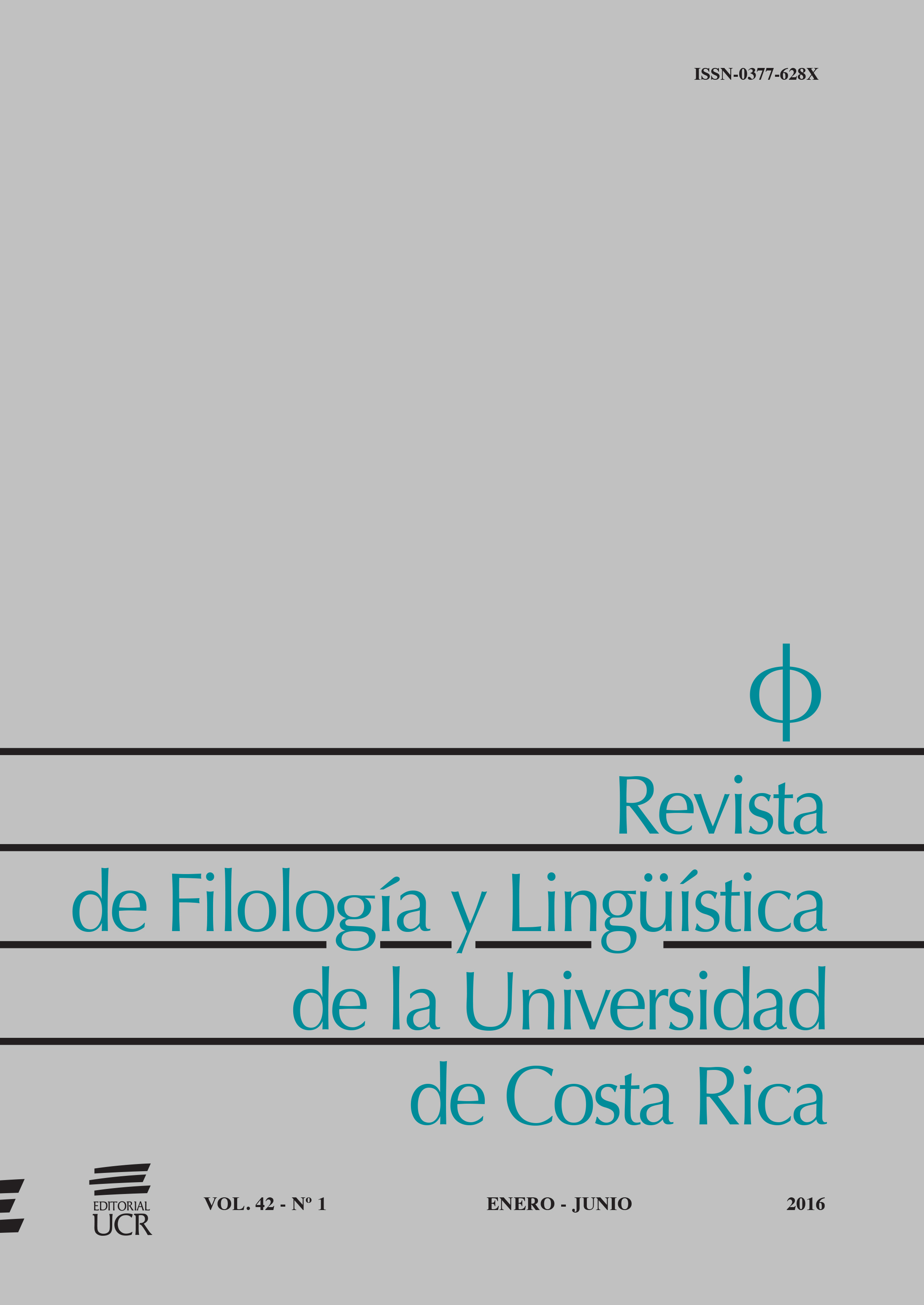Abstract
This article examines laughter as a politeness strategy when it appears in face-threatening acts. The data comes from a video-recorded and naturally occurring interaction from the everyday context between three close friends. Eighty-one instances of laughter were found in face-threatening acts such as conversational inappropriateness, risky statements, criticism, and disagreement. The pragmalinguistic analysis reveals that the laughther appeared in face-threatening acts works as politeness strategy while strengthening social face, mitigating a potential attack or reinforcing a face threatening.
References
Bachorowski, J. y Owren, M. J. (2004). Laughing Matters. Psychological Science Agenda. APA Online. 18 (9). http://www.apa.org/science/psa/sb-bachprt.html [Consulta 10 de noviembre de 2005].
Bolaños, A. (2007). La función de la risa en la conversación coloquial entre amigos. (Tesis de Maestría en Lingüística). Universidad de Costa Rica.
Bolaños, A. (2010a). La risa y el contexto. Revista Umbral.26 (1), 29-35.
Bolaños, A. (2010b). La risa: elemento regulador del flujo conversacional. Revista InterSedes. 11 (20), 22-35.
Bravo, D. (1996). La risa en el regateo: Estudio sobre el estilo conversacional de negociadores españoles y suecos. Stockholms Universitet: Institutionen för spanka och portugisiska. Edsbruck, Akademitryck.
Bravo, D. (1997). ¿Reírse juntos?: un estudio de las imágenes sociales de hablantes españoles, mexicanos y suecos. Diálogos Hispánicos. (22), 315-364.
Bravo, D. (2000). Risas y contrastes en los estilos comunicativos de negociadores españoles y mexicanos. Signo & Seña. Revista del Instituto de Lingüística de la Facultad de Filosofía y Letras. (11), 133-165.
Briz, A. (1998). El español coloquial en la conversación. Esbozo de pragmagramática. Barcelona: Editorial Ariel.
Brown, P. y Levinson, S. (1987). Politeness. Some universals in language usage. Cambridge: Cambridge University Press.
Carroll, D. (2002). Laughter in Conversation. http://homepage.mac.com/dcarroll2/2002/JECA/lecture13.htm [Consulta 9 de enero de 2007].
Cestero-Mancera, A. M. (1996). Funciones de la risa en la conversación en lengua española. Lingüística Española Actual. 18 (2), 279-298.
Crystal, D. (1999). The Penguin Dictionary of Language. London: Penguin Books.
Devereux, P. G. y Ginsburg, G. P. (2001). Sociality Effects on the Productions of Laughter. Journal of General Psychology Online. 128 (2), 227-240.
Duranti, A. (2000). Antropología lingüística. Madrid: Cambridge University Press.
Glenn, P. (2003). Laughter in Interaction. Cambridge: Cambridge University Press.
Grice, H. P. (1998). Presuposición e implicatura conversacional. Por M. T. Julio y R. Muñoz (Comp.). Textos clásicos de pragmática. (105-124). Madrid: Arco Libros.
Lewandowski, T. (1995). Diccionario de lingüística. Marid: Ediciones Cátedra.
Provine, R. (1996). Laughter. http://www.americanscientist.org/template/AssetDetail/ assetid/24591/page [Consulta 10 de noviembre del 2005].
Robinson, D. y Smith-Lovin, L. (2001). Getting a Laugh: Gender, Status, and Humor in Task Discussions. Social Forces. 80 (1), 123-158.
Soilevuo-Grønnerød, J. (2004). On the meanings and uses of laughter in research interviews. Relationships between interviewed men and a woman interviewer. Young. Nordic Journal of Youth Research. 12 (1), 31-39.
Tannen, D. (2001). You Just Don’t Understand. New York: Quill.
Tusón, A. (2002). El análisis de la conversación: entre la estructura y el sentido. Estudios de Sociolingüística. 3 (1), 133-153.

